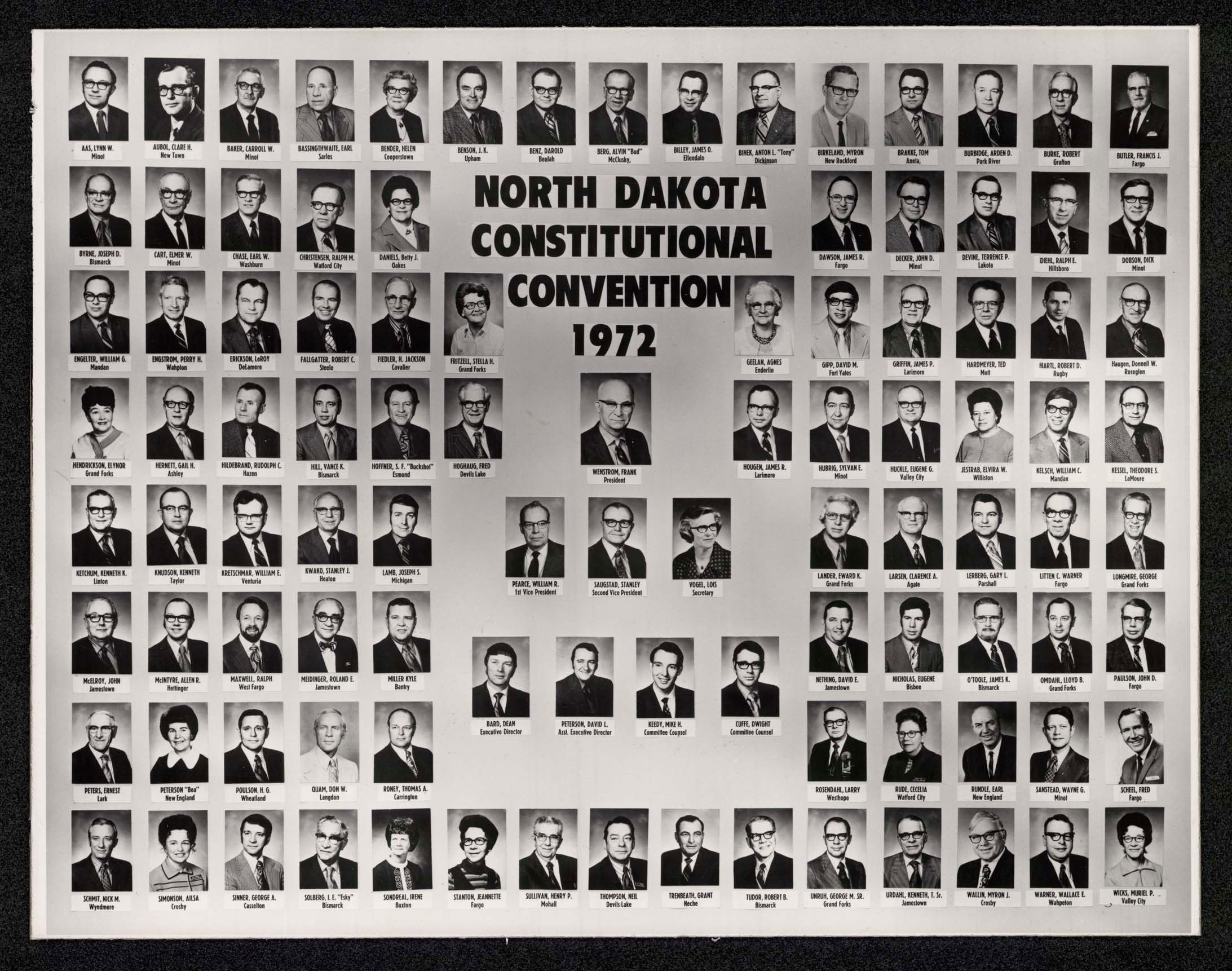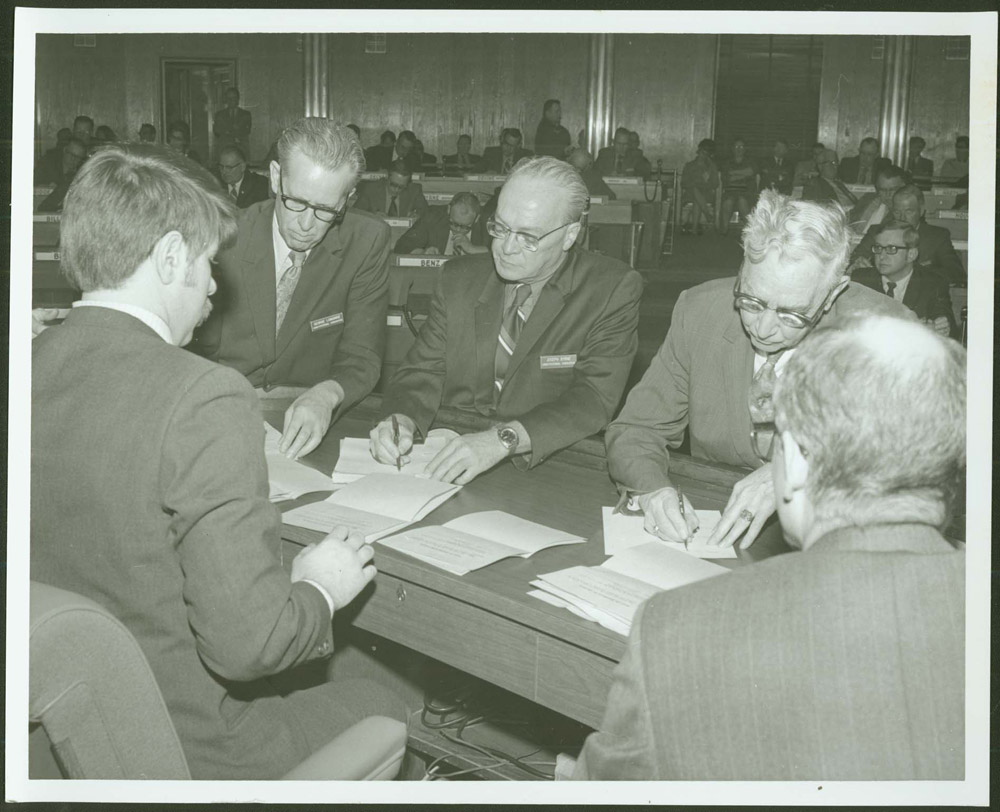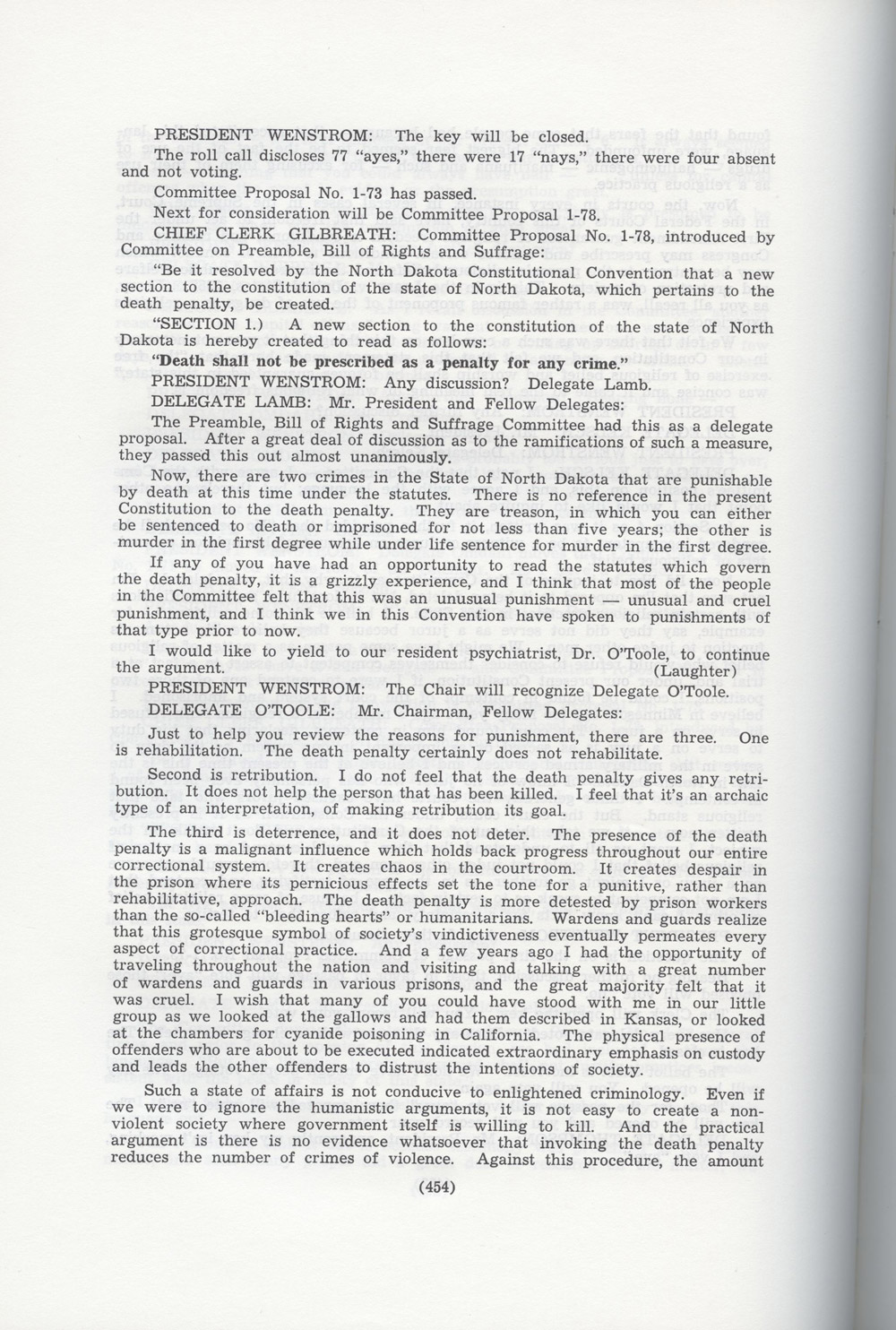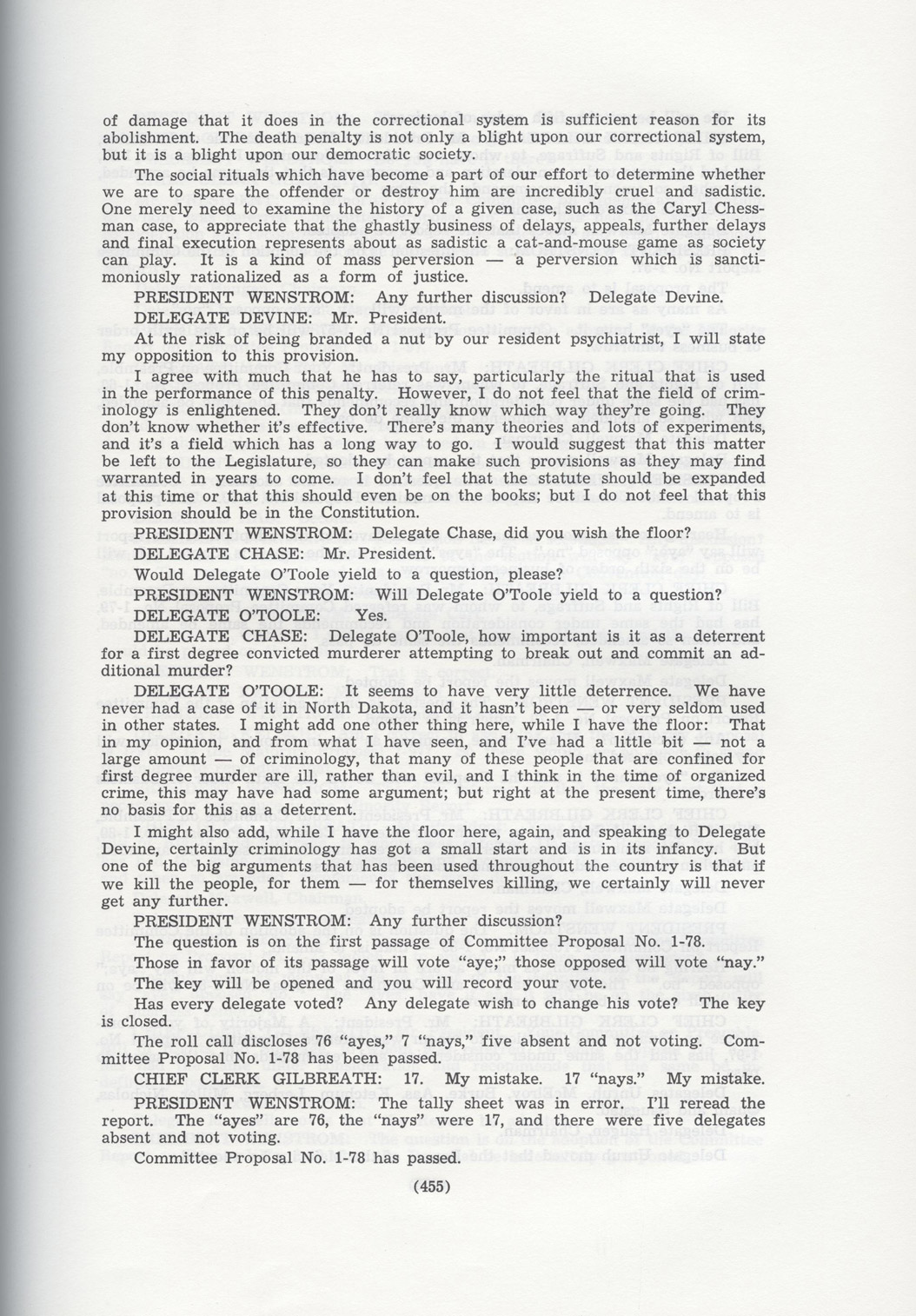When the first state constitutional convention met in 1889, the delegates considered two different approaches to constitution-building. One method used the U.S. Constitution as a model. This type of constitution provides a framework for structuring government, but laws were left to be written by Congress. On the other hand, constitutions can be written to include specifics about how the state would operate. Some historians say that this model incorporates law into the constitution which restricts future legislatures from making decisions.


The 1889 delegates chose to follow the second model and wrote a lengthy constitution that created an intentionally weak government. The important leadership roles in government, such as the Secretary of State and Commissioner of Agriculture were elected by the people. The governor could make few appointments. This means that it was possible that the governor would be of a different party or a different political philosophy than other state officials.
The constitution also placed some limits on future legislatures. The state wrote into the constitution a clause prohibiting the sale and consumption of alcoholic beverages. Prohibition was often considered to be best addressed by law, not by constitution, but the delegates wanted to be sure that future legislatures could not easily put an end to prohibition. The constitution also set the pay for legislators at five dollars per day and ten cents for every mile of travel on legislative business. Compensation for legislators, like other parts of the constitution would have to be adjusted by constitutional amendment.
The delegates thought they were creating a constitution that would be useful for many decades into the future. However, by 1969, the original North Dakota constitution had been amended 95 times. The amendment process is expensive because each amendment must be submitted to the voters for approval. In the 1969 legislative session, members of the House and Senate passed a resolution to amend the constitution to authorize a state constitutional convention. As required, the amendment went to the voters who approved the measure by a wide margin (65,734 to 40,094).
The second constitutional convention for North Dakota convened on April 6, 1971. (See Image 9.) The 98 delegates formed six committees to review and propose articles for a new constitution.William Guy was governor at the time of the constitutional convention. He thought the state needed a new and more efficient constitution. He invited a few people to become delegates and was pleased with the quality of people who made up the convention. 'When I saw the makeup of the constitutional convention,' he said, 'I thought that, easily, never before had such an outstanding group of individual North Dakotans gathered together for one purpose. They . . . did a really good job, too.' Delegates to the convention included businessmen (34), farmers (25), lawyers (14), medical professionals (6), teachers (3), government employees (4), housewives (6), retired persons (3), labor official (1), newspaper editors (2). There were 85 men and 13 women. The proposals were discussed in public meetings. The convention reconvened in Bismarck on January 3, 1972. The delegates debated, revised, and wrote a new constitution. (See Image 10.) The convention adjourned on February 17, 1972. The vote on the constitution was set for April 28.
The constitution was debated in newspapers, cafes, and living rooms. (See Document 3.) Many parts of the new constitution were designed to make government more efficient. The new constitution allowed for seven elected state officials instead of 14 elected officials. In addition, the office of State Auditor would be changed to auditor general in the legislative branch. When re-apportionment of legislative districts was required, the process would be conducted by an independent commission of district judges.
Convention delegates also presented voters with four constitutional clauses for a separate vote. If the voters approved, these clauses would become part of the new constitution (if the constitution was approved). One clause called for a unicameral legislature. This is a one-house legislative body. Today, only Nebraska has a unicameral legislature. Another clause offered full adult status to persons over the age of 18.Delegates vigorously debated whether 18-year-olds could have full adult status. This would give 18-year-olds the legal right to vote, hold office, sign contracts, and enter bars. At the time, full adult status was acquired at the age of 21. Some delegates thought that 19-year-olds were better prepared for adult status. Others pointed out that 18-year-olds were serving in the armed forces in Vietnam and that the federal government had just granted 18-year-olds the right to vote. Delegates decided to offer the age of majority (full adult status) to voters as a separate clause so that the entire constitution would not be defeated on this one issue. Another clause increased the signatures needed for initiated and referred measures. The fourth clause would legalize some forms of gambling.
Some parts of the new constitution were highly controversial. The new constitution had a “right to work” clause. The right to work philosophy has been written into law in 24 states. Right to work laws allow workers to choose to join or not join a union.Union membership is sometimes controversial. Unions provide certain services to their members including contract negotiations, supervision of workplace safety, and protection against unemployment. Unions also organize strikes and help workers during a strike. Unionized workers tend to have higher wages, but have to pay dues to the union for their membership benefits. In many states, a 'union shop' or 'closed shop' is a workplace where all employees must be members of a union. Unions tend to be most active in states with an industrial economy. People who support the right to work idea say that workers should be free to decide whether to join or union or not. In a state where 'right to work' laws have been passed, unions can organize a workplace, but they cannot force all workers in one industry or workplace to join the union. Right to work laws do not apply to railroad workers’ unions. Some people thought that the right to work issue was a matter for law, not the constitution. This clause might have caused union members to vote against the new constitution.
Rural electrical cooperatives thought the new constitution might interfere with the cooperative nature of their organizations. They might have been mistaken, but the issue would not be resolved unless it was decided by the North Dakota Supreme Court. The clause seemed too undefined for the cooperatives to give the constitution their full support.
The voters turned down the new constitution on April 28 with a vote of 65,734 to 40,094. Of the four separate clauses, the people rejected a unicameral legislature and lowering the age of adulthood. However, voters approved of the state instituting some gambling laws and raising the number of signatures for initiatives and referenda. The approval of these clauses served to guide the legislature in future decisions.
Why is this important? The kind of government we have depends on the wishes and efforts of the people. Constitution writing is complex and requires careful thought, research, and compromise. Though the delegates to the 1972 constitutional convention put great effort into their decisions, the people of North Dakota decided that they preferred the old constitution even though it would need further amendments.






